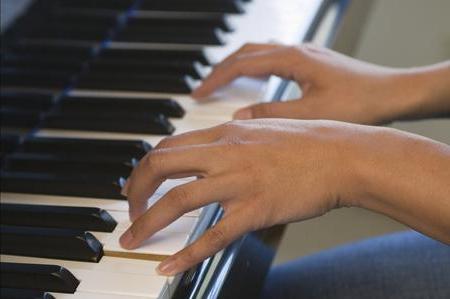An etude is a simple musical form, which most often has a small volume. A similar work contains certain tricks that allow you to improve the technique of playing an instrument. This technique may be one, but it happens that several different techniques are intertwined in one work. Thus, we can say that an etude is an exercise that allows you to stretch yourself before performing works of a larger form. Etudes are also taught in order to improve their playing technique.
Short essay
Perhaps there is no such musician in the world who would not play at least one etude. These completed and often very beautiful pieces are performed on violins, cello, guitars and flutes. But most often in music there are exactly etudes for piano. After all, this instrument requires the musician most of all technique. In the 19th century, it was for the piano that the famous German composer Karl Czerny wrote about a thousand plays promoting the development of fingers and playing techniques. In his first collections, each piece is a simple and unpretentious sketch. These are arpeggio-based workouts that need to be played first with one hand and then with two at the same time. He also wrote many works of small form, based on scales, chromatic harmonies and other frets.
Kings of Etudes
More complex works of Czerny are the so-called “schools”. Among these, we can distinguish the "School of Finger Dexterity" or the "School of Fugue." Such plays seem to prepare the pianist for further performance of large-scale works. This once again emphasizes that an etude is a technical exercise that you just need to learn, memorize in order to play one of the masterpieces of classical works perfectly and with feeling.
From exercise to large form
A completely different meaning for the word “study” appeared after Frederic Chopin passed a similar musical form through the prism of his work. His supposedly teaching plays have become real large works that have a certain emotional color, mood, a large gradation of shades and even several parts. One of the most famous plays of this form is the C-dur study. It immediately feels the influence of the style of I.S. Bach - broken arpeggios, rigor and consistency in performance. It is worth noting that a similar unity of style can be traced in all the works that Chopin created.

Etudes from the essay op. 10 are distinguished by a bright, one might even say, “volcanic” character. In those years, the composer was struck by the defeat of the Polish uprising, so these bellicose motifs appeared in his work. 12 etude was called “Revolutionary”, and followed by “Winter Whirlwind” (op. 25 No. 11). In the work of this writer there are many more sketches that are performed as suites, sonatas, romantic plays. They can be heard at various concerts - at the Philharmonic or just at a music school.
Conclusion
Studies were written by various musical creators from the 18th century. This genre has become familiar to composers around the world since many children got the opportunity to learn musical notation.